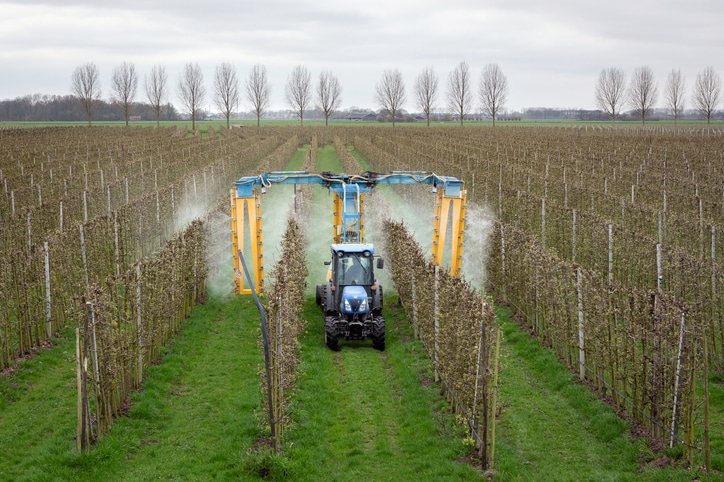This post was originally published on Eco Watch
A new study led by Arizona State University has revealed an association between exposure of glyphosate, one of the most commonly used herbicides in the world, and long-term impacts on brain health in mice.
The study tested the impacts that two different doses of glyphosate exposure had on mice, with a high dose (500 mg per kg) and a lower dose (50 mg per kg), which was similar to the amount that was used to determine the acceptable dose of exposure to humans. The researchers observed how the exposure impacted the brains during a 13-week exposure as well as six months after exposure had ended compared to the control mice, which received no glyphosate exposure.
The team determined that glyphosate exposure led to neuroinflammation as well as behaviors and symptoms similar to anxiety and Alzheimer’s. For some of the animals, the exposure was associated with results as extreme as premature death.
Even the low dose led to negative impacts on the brains that lasted several months after exposure had ended. The scientists published their findings in the journal Journal of Neuroinflammation.
“My hope is that our work drives further investigation into the effects of glyphosate exposure, which may lead to a reexamination of its long-term safety and perhaps spark discussion about other prevalent toxins in our environment that may affect the brain,” Samantha Bartholomew, first author of the paper and a Ph.D. candidate at Arizona State University, said in a statement.
Hans Verburg / iStock Editorial / Getty Images Plus
These results have raised concerns over the current standards for glyphosate, which is considered to have no concerning risks to human health when used as directed on the label, according to the U.S. Environmental Protection Agency.
Further, the researchers warned about the potential impacts to aging populations, which are already experiencing an increase in cognitive decline, according to Ramon Velazquez, a co-author of the study, researcher with the ASU-Banner Neurodegenerative Disease Research Center and assistant professor of life sciences.
But the researchers hope that more investigation is completed to determine if the current acceptable limits of glyphosate are too high, or whether any exposure of glyphosate poses risks.
“Herbicides are used heavily and ubiquitously around the world,” said Patrick Pirrotte, senior author of the study and associate professor at the Early Detection and Prevention Division at Translational Genomics Research Institute (TGen). “These findings highlight that many chemicals we regularly encounter, previously considered safe, may pose potential health risks. However, further research is needed to fully assess the public health impact and identify safer alternatives.”
While the findings brought up the question of what these impacts observed on brains of mice could mean for glyphosate exposure and its potential impacts on human brains, it can also be used as an example to further research alternatives to testing on mice and other animals. Because of the complexity of brains, it is currently still common to use animal testing to observe reactions and impacts in brain research.
As Cruelty-free International reported, researchers are working on other ways to complete these important types of organ and nervous system studies without the use of animal testing. Scientists are rapidly exploring and advancing alternatives, such as computer modeling, tissue donations, cell cultures and “human-on-a-chip” models for brain research. PETA reported that AI is becoming more suitable as a method for alternative testing. However, more research on non-animal testing is necessary, and once alternatives are more established, they will require regulation to be implemented.
The post Glyphosate Exposure Linked to Long-Term Brain Inflammation appeared first on EcoWatch.





0 Comments